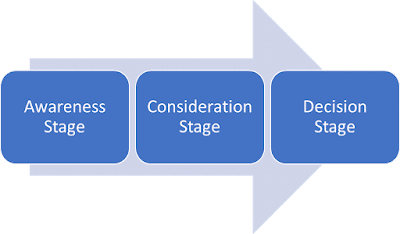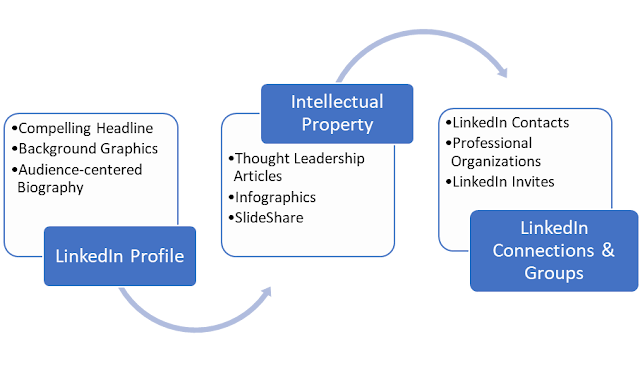It is commonly believed that introverts prefer to spend their waking hours reading, writing, and meditating in private.
Although this is true for many introverts, a cadre of introverts uses their solitude to create intellectual works.
These “Academic Artists” are applied researchers who use their solitary lifestyle to create problem-solving solutions that can transform industries.
Tervooren and Lundberg (2016) interviewed hundreds of respondents inquiring about the significant reasons for introverts not taking more leadership roles. The following are the results of their survey:
- Self-doubt. You’re unsure of your leadership skills.
- Trouble being perceived as a leader. You may be confident, but others don’t see you as their leader.
- A lack of leadership skills. You know you don’t have the skills you need and are unsure how to get them.
- Feeling inauthentic. You hesitate to lead because it doesn’t feel natural.
- No time/energy to lead. You’re already doing too much, and you’re too tired to take on the responsibility.
These results are not surprising given the ambiguity and challenges of effective leadership.
However, a case can be made that these results could arguably be personality neutral. In other words, extroverts could feel the same about their leadership abilities.
A more significant question posited is, should introverts have the same leadership aspirations as everyone else when they are wired differently?
The answer is a resounding no.
The internet and social media allow introverts to become thought leaders versus traditional leaders in ways like never before.
Thought Leader Defined
Brosseau (n.d.) says, “Thought leaders are the informed opinion leaders and the go-to people in their field of expertise. They are trusted sources who move and inspire people with innovative ideas, turn ideas into reality, and know and show how to replicate their success.
Over time, they create a dedicated group of friends, fans, and followers to help them replicate and scale their ideas into sustainable change not just in one company but in an industry, niche, or entire ecosystem.”
Becoming a thought leader within any field requires more than spewing mere opinions and a recitation of your years of experience. Without barriers to entry, anyone with a website, smartphone, or blog can become a thought leader.
However, using intellectual property to stay top of mind within your profession requires a different skill set. You must be able to discover, diagnose, and solve problems pertinent to your industry’s needs.
And this becomes an essential skill for creating a body of work that makes you influential and immortal within your industry.
Here are a few tips for introverts to showcase and sell their ideas.
Showcase Your Intelligence
Let’s face it; there are many intelligent people in the world. However, if you were to Google any number of these individuals, finding a prolific body of work would not be easy.
Many professionals earn excellent salaries and hold lofty positions but have not documented their intelligence through articles, books, and videos. Thought leadership is a way of documenting your work as an evangelist for an intelligent cause.
Thought leaders demand that their net worth matches their intellectual contribution. The beauty of creating intellectual property online is that once you make the material, it exists perpetually. Your thought leadership efforts continue while you sleep.
Outsource intellectual property development
Use different formats to document your solutions. Articles, books, podcasts, and videos are excellent ways of establishing trust and credibility. Since professionals have very little time to create intellectual property, there are cost-effective ways of outsourcing this task.
Fiverr.com allows you to hire freelance writers, editors, and graphic artists to create intellectual property at reasonable prices. Marketer’s Guide to LinkedIn, 94% of B2B marketers use LinkedIn as a content distribution channel, compared to Twitter at 89%, Facebook and YouTube at 77%, and Google+ 61%. LinkedIn should be your first stop if you have content to distribute (which you definitely should). It’s where most B2B marketers go first.” (Gallant, 2019).
Automate your thought leadership marketing
Creating and curating information on sites like LinkedIn can be a daunting task. Fortunately, the software allows you to schedule content distribution weeks and automatically post information on designated days.
Buffer.com is an excellent choice when you don’t have time to share information manually daily. You can post up to ten (10) articles for free, after which there is a small monthly fee.
With the advent of technology and social media, it is easier to become a thought leader today. You don’t have to rely on a book publisher like Simon & Schuster or major broadcasting networks like ABC, NBC, and CBS to select you.
As a marketer, Seth Godin says, “Now, you can pick yourself.” However, the bar has been raised because of all the noise and chatter that neophytes and dilettantes display to attain short-term success. In the end, thought leaders and subject matter experts will remain.
When I started talking about “Thought Leadership,” I aimed to demonstrate how individuals could become influential by turning their thoughts and ideas into intellectual property.
I witnessed people reading my articles, but I wasn’t seeing enough people creating their original research and material. After all, how would we balance the outside noise of entertainment if we didn’t create scholarly reports, books, white papers, etc.?
More importantly, how would we become indispensable within our professions if we didn’t create content that set us apart from the vox populi?
I’m guessing that if your life has mirrored mine, you realize that manifesting ideas through documentation is the BEST and ONLY way of not only influencing the world but staying relevant and indispensable.
In a fast-paced world, information at one’s fingertip is more effective than information that is labor intensive. Traditional forms of leadership can be viewed as labor intensive.
This leadership model requires leaders to communicate verbally regularly, delegate responsibilities to subordinates, and follow up to ensure compliance. It is safe to suggest that traditional leadership has largely been about getting average individuals to do what they ultimately don’t want.
Introverts must embrace marketing principles but implement them differently than other personality types. Becoming a thought leader/scholar fits nicely into the DNA of introverts.
Essentially, you merely have to shut off your website or blog’s “comments” section and send information out at your will. You are sharing information that solves problems. Either someone desires the data, or they don’t.
Introverts don’t desire to force-feed people to ingest what’s in their best interest.
Whether online or offline, consumers of information go through a mental process of awareness, consideration, and decision, often referred to as the “Buyer’s Journey.” Hintz (2018) defines the Buyer’s Journey as “The process buyers go through to become aware of, consider and evaluate, and decide to purchase a new product or service.”
Each stage of the Buyer’s Journey provides the information and confidence necessary for a decision to purchase a product or service.
The journey consists of this three-step process (Hintz, 2018):
Awareness Stage: The buyer realizes they have a problem.
Consideration Stage: The buyer defines their problem and researches options to solve it.
Decision Stage: The buyer chooses a solution.
The necessary tactics for each stage include:
Awareness Stage (Education)
§ Thought leadership articles
§ White papers
§ SlideShare presentations
§ Infographics
Consideration Stage (Evaluation)
§ Quizzes
§ Survey results
§ Comparison/Contrast charts
§ Questionnaires
Decision Stage (Purchase)
§ Checkout page
§ Catalog
§ Sales
§ Call-to-Action
It is crucial to have information that covers each stage because you never know what stage a potential consumer might be in at any given time. If she is merely gathering information, she is reading articles and any text that may provide an aerial view of what she’s looking for.
She may know what she’s looking for but wants to see what options are available. And once she considers her options, she is ready to select. So, in today’s market, you must create a web where the consumer is magnetically brought into the process. Traditional marketers refer to such processes as a funnel.
However, a web is more apt because a web creates a broader swath. A narrow funnel assumes that the road to decision-making is a straight path. In reality, decision-making is as emotional as it is analytical and thus may transcend established boundaries. It is an aggregate consisting of a mass of little parts leading to a conclusion.
The term “Buyer’s Journey” is appropriate because a consumer takes a self-directed excursion to find a solution to a problem that brings her peace and serenity.
Why LinkedIn Should Be Your Chosen Platform
Many introverts may not have the desire or inclination to code or build websites. If introverts enjoy quiet times of reflection, reading, and writing, a natural extension of these interests is to create solutions to problems on a viable platform.
It would be a cliché to envision introverts merely lying around thinking about random, meaningless thoughts. Instead, imagine a sensitive, caring individual who desires to create ideas and solutions but doesn’t want to debate nor discuss their validity with people who haven’t done homework.
It would be shortsighted to believe that introverts don’t want their work to be analyzed and evaluated. Just don’t criticize them without the proper intellectual exchange and respect.
The social media platform LinkedIn is considered the premier social media site for professionals. LinkedIn has almost 600 million members and growing and is easily the most “target rich” social media platform for professionals looking to create or expand their network.
If done correctly, LinkedIn could be a “one-stop” shop for introverted professionals to establish themselves as trusted thought leaders. Many marketers frown on using social media sites, considered “Rented Space,” as a platform for building a long-term brand.
These pundits suggest that sites like LinkedIn have total control over your content and could choose to close your account down at their will—erasing all of your intellectual property. While this is true, the benefits outweigh any liabilities.
Since your target audience uses LinkedIn already, it is much easier to connect with them on LinkedIn than on your website. It’s equivalent to networking at a palatial business function and immediately inviting new contacts to your home.
It is prudent to share your professional information as you nurture mutual interests, but not in a way that screams, “Buy me now!”
You should have your professional website besides your LinkedIn profile to ensure that your efforts are not undermined if LinkedIn or any other social media decides to shut you down or go out of business.
Any intelligent investor hedges or protects her investment, and LinkedIn should be viewed as a professional investment in your intellectual pursuits.
Streamlining your LinkedIn efforts into one harmonious overarching message to a specific niche or audience is essential. Quite often, there is a disconnection between a LinkedIn background graphic, headline, and biography.
Once this connection occurs, it bleeds over into the types of content shared and created. For example, a personal injury attorney merely says “Personal Injury Attorney” in his headline with a picture of himself with a basic resume of his services does not create compelling imagery. This is not part of a brand; this is a billboard.
And while billboards help create a brand, they should not be a “one-off.” Every stated and nuanced message has to state and exemplify what precisely your firm does, and it does not merely win judgment awards.
The American Academy of Advanced Thinking (AAAT) Style
The biggest reason to merge all your LinkedIn marketing is to create one resonating message.
Everything should point to the critical problem you solve and for whom you solve it. If LinkedIn has nearly 600 million users, you can’t afford to have your voice or brand lost in a cacophony of competing interests.
Once you establish your overarching message, your intellectual property should follow suit in establishing your leadership presence.
The AAAT Style looks like this:
For introverts, your LinkedIn Profile aims to educate and introduce consumers to your ideas, products, or services. Using an insect analogy, you want to be a gnat. However, you don’t want to be bothersome but ever-present.
Amazon, the online retailer, has rarely if ever, contacted you. You don’t receive Amazon mailers or flyers introducing sales or discounted prices. And Amazon commercials could easily be mistaken as UPS or U.S. Postal Service commercials, which focus on delivery methods.
Through intelligent and non-invasive measures, Amazon has positioned itself as a company that is always there when you need it. Similar thinking is essential when constructing your LinkedIn Profile.
You consistently curate and create relevant content that ties your LinkedIn Connections and Groups to your offerings.
LinkedIn Profiles
Many content marketing pundits disavow the idea of “Reaping and Sowing.” These experts suggest that content marketing as a concept should not have an expectancy of profits. They indicate that your efforts should not lead to a profit motive.
Such thinking is adversarial to capitalism and the free market system and should be reconsidered. The internet has created a “Buyer’s Market,” where an actual free market thrives.
As a result, focused and concentrated efforts to inform are the current means that potential clients know, like, and trust your offerings. And because of the vagaries and competition within a free marketplace, consistency and relevancy are your best friends.
The AAAT Style starts with your actual LinkedIn Profile page. Your LinkedIn Profile page should have a compelling headline that articulates: Who are you targeting? What are you doing for them? And What are the results?
An example would be “Helping Strategic Thinking Introverts Become More Assertive & Influential in a Domineering World.” Merely providing the name of your current position will not fully capture your proposition.
People have and will always judge a book by its cover.
Next, your LinkedIn background graphic should relate to the audience that you are attempting to attract. Remember, a picture is a thousand words. So, the graphic should align with your headline.
Finally, your LinkedIn biography should speak directly to your targeted audience, answering the following questions: What problem have you identified for that particular audience? What impact does the problem have on the audience’s ability to save or make money? What is the solution? And what actions should the audience take to solve the problem?
Most LinkedIn biographies are a recitation of a standard resume. To be most effective, follow this outline, and you will have a better chance of people understanding what you do and the value you provide.
Intellectual Property
Intellectual property is any documented creation that can be legally protected through copyrights, patents, trade secrets, or trademarks. Articles, books, podcasts, and videos are all examples of intellectual property.
Thought leadership articles could be simple questions and answers format, as well as an article that takes a deeper dive into an issue significantly affecting that audience.
To establish yourself as a thought leader in becoming known, liked, and trusted requires a long-term commitment to developing a body of work surrounding a specific topic or subject matter.
For consistency and attraction, infographics and SlideShare platforms help spread information in a more engaging and “Bite-sized” fashion.
You can extract the findings from a well-researched article and create infographics and SlideShare presentations that highlight significant points and spread your influence.
LinkedIn Connections & Groups
Your LinkedIn connections and groups are where you build your influence. This network should consist of members of the profession or industry you serve.
For example, if you are a small business accountant, your connections should be small business niches that you serve. For instance, if it’s small business retailers, “Mom & Pop” or boutiques should be your network on LinkedIn.
If you change niches, the entire process has to be reconstructed. You are developing a direct link to your professional community by providing updated and relevant information about small businesses.
Conclusion
For introverts, the secret to becoming a thought leader is to embrace a results-driven method. By merely developing and consistently following a viable process, you can build your influence ethically and profitably by establishing yourself as a trusted advisor.
And the best thing about such a commitment is that it does not cost anything but time. You wouldn’t be inundated with competition within your chosen niche because many people are looking for shortcuts.
For you, creating and sharing new and innovative information that solves problems is a calling, if not a crusade.
William Shakespeare says, “All the world’s a stage… and we’re mere players.” In life, what part will you play?
—Edward S. Brown, M.S.
References
Brosseau, D. (n.d.). What is a thought leader? Thought Leadership Lab. Retrieved from: https://bit.ly/3GKP82O.
Brown, E. (2019, Sept. 9). Secrets of online law firm marketing: Why attorneys hate marketing and what they can do about it. LinkedIn Publisher. Retrieved from: https://bit.ly/2ZEUhIs.
Gallant, J. (2019, Jan. 1). 48 eye-opening LinkedIn statistics for B2B marketers in 2019. Foundation. Retrieved from: https://bit.ly/3nQBVwu.
Hintz, L. (2018, Oct. 29). What is the buyer’s journey? HubSpot. Retrieved from: https://bit.ly/3jYTcCJ.
Tervooren, T., and Lundberg, E. (2016, Aug. 5). The top 5 introvert leadership challenges (and how to beat them. Observer. Retrieved: https://bit.ly/3w67mXg.






One thought on “The Secrets to Introverts Becoming Thought Leaders”
Comments are closed.